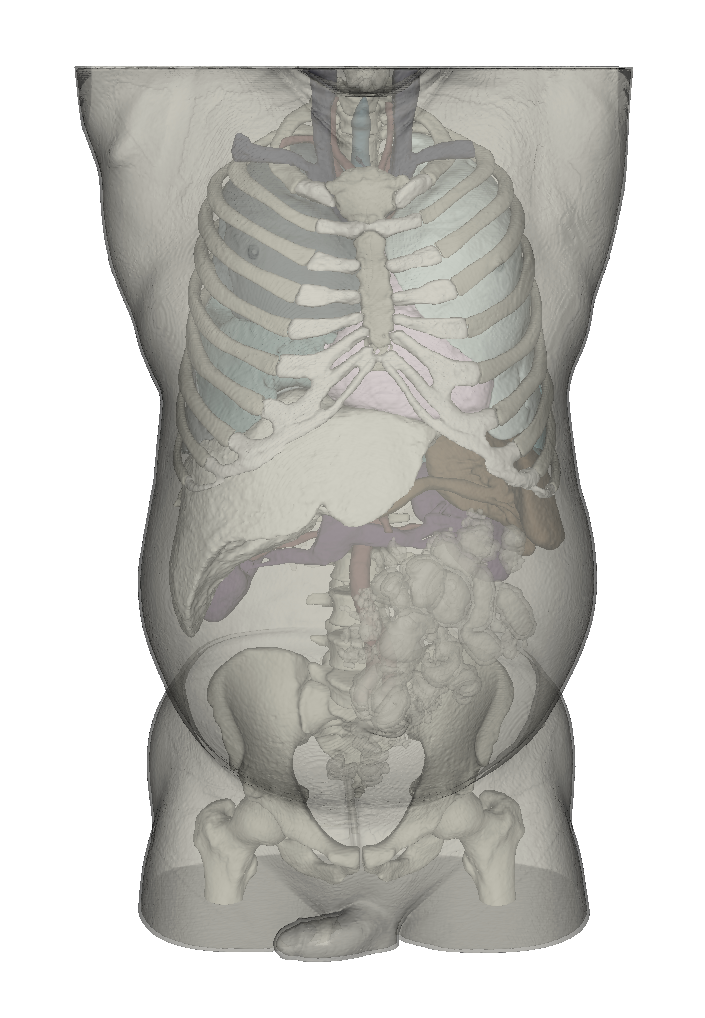Trunk
The trunk can also be called a torso. It represents the trunk without head and extremities. It contains the bony structures of the trunk skeleton. It is further divided into Thorax, Abdomen, Dorsum and Pelvis. The trunk contains the basic Inner organs, while the abdomen contains the stomach, small and large intestine, spleen, liver, kidneys and pancreas. The chest houses the heart and lungs. The pelvis contains the bladder and sexual organs.
Anatomy
The lower part of the trunk is the pelvis. This consists of the two hip bones (Ossa coxae) and contains the internal pelvic organs. The abdomen is located between the rib cage (height of the tip of the sternum) and the pelvis (up to the inguinal ligament). Within the abdomen is a fluid-filled cavity - the abdominal cavity or abdominal cavity. The diaphragm forms the upper limit of the abdominal cavity. Below it it is bounded by the hip bone and the pelvic floor. The back extends from the loin or coccyx to the lower part of the neck. This includes the spine, the rear parts of the ribs and soft tissues such as connective tissue and back muscles. The thorax is formed by the thoracic spine, the sternum and the ribs. The respiratory musculature attaches itself to the outside and inside of the rib cage.
Funktion und Aufgaben
Das Rumpfskelett und die Muskulatur sorgen für die Stabilität des Oberkörpers. Nur dank der Knochen und Muskeln im Rumpf sind aufrechtes Gehen und Stehen für den Menschen möglich. Außerdem liegen im Rumpf nahezu alle wichtigen Organe des Körpers mit Ausnahme des Gehirns. Im Bauch befinden sich die meisten Verdauungsorgane wie Magen, Dünndarm, Dickdarm, Milz, Bauchspeicheldrüse und Leber. Die Leber ist das wichtigste Stoffwechselorgan des Körpers. Sie ist besonders wichtig bei der Nährstoffverarbeitung und der Entgiftung des Körpers. Die Nieren, ebenfalls zu den Bauchorganen gehörend, filtern das Blut und unterstützen die Ausscheidung von Stoffwechselendprodukten. Eine weitere Funktion ist die Regulation des Blutdrucks und des Wasserhaushaltes. Im Brustkorb liegen sowohl Herz als auch Lunge. Das Herz ist das zentrale Organ für den Blutkreislauf. Die Lunge sorgt für die Anreicherung des Blutes mit Sauerstoff. Kohlendioxid wird aus dem Blut entzogen und abgeatmet. Im Bereich des Beckens befinden sich die Blase, die ableitenden Harnwege und die Geschlechtsorgane. Über die Blase und die ableitenden Harnwege wird der in den Nieren produzierte Urin ausgeschieden. Die Geschlechtsorgane dienen primär der Fortpflanzung.
